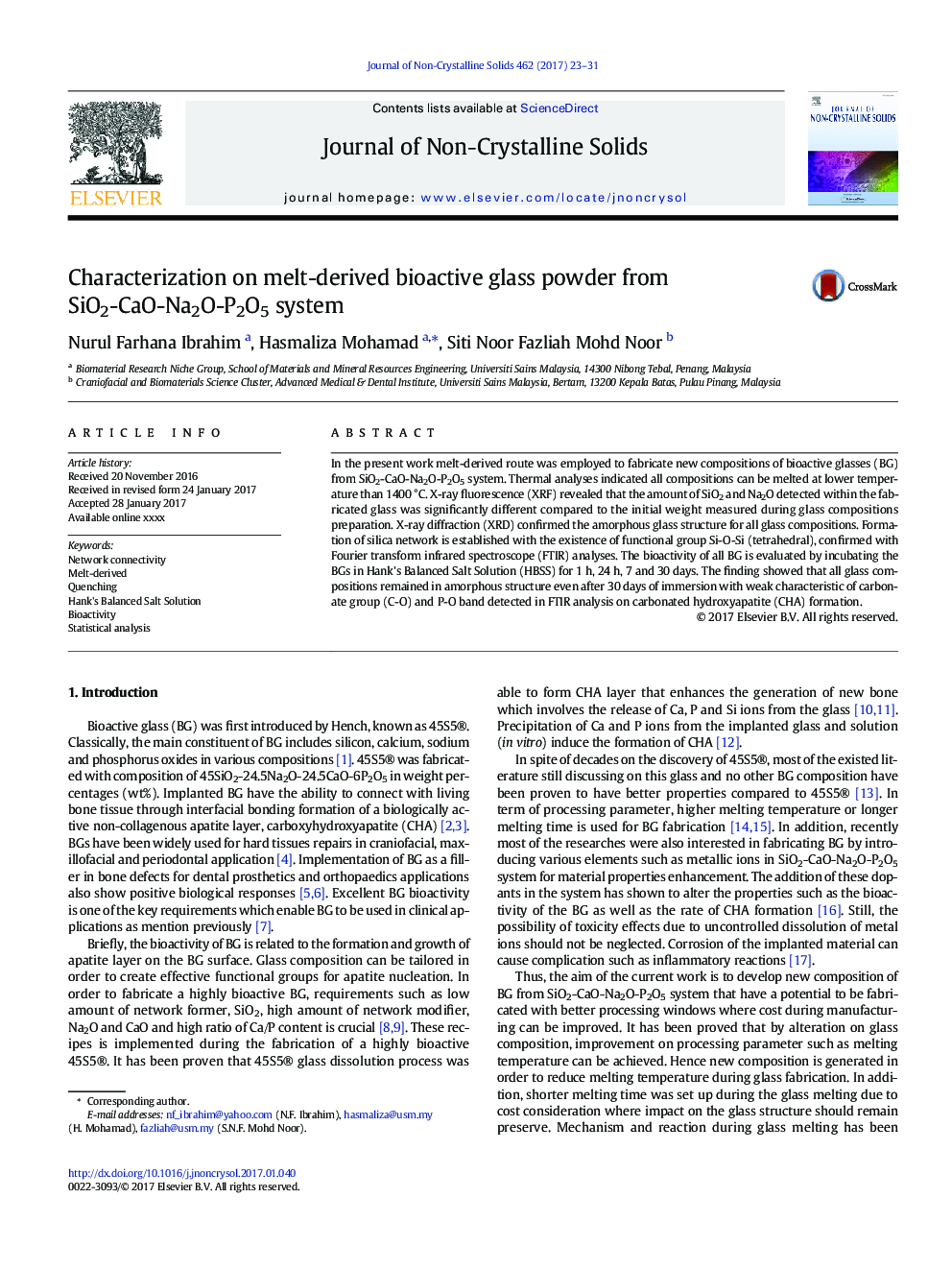| Article ID | Journal | Published Year | Pages | File Type |
|---|---|---|---|---|
| 5441287 | Journal of Non-Crystalline Solids | 2017 | 9 Pages |
Abstract
In the present work melt-derived route was employed to fabricate new compositions of bioactive glasses (BG) from SiO2-CaO-Na2O-P2O5 system. Thermal analyses indicated all compositions can be melted at lower temperature than 1400 °C. X-ray fluorescence (XRF) revealed that the amount of SiO2 and Na2O detected within the fabricated glass was significantly different compared to the initial weight measured during glass compositions preparation. X-ray diffraction (XRD) confirmed the amorphous glass structure for all glass compositions. Formation of silica network is established with the existence of functional group Si-O-Si (tetrahedral), confirmed with Fourier transform infrared spectroscope (FTIR) analyses. The bioactivity of all BG is evaluated by incubating the BGs in Hank's Balanced Salt Solution (HBSS) for 1 h, 24 h, 7 and 30 days. The finding showed that all glass compositions remained in amorphous structure even after 30 days of immersion with weak characteristic of carbonate group (C-O) and P-O band detected in FTIR analysis on carbonated hydroxyapatite (CHA) formation.
Related Topics
Physical Sciences and Engineering
Materials Science
Ceramics and Composites
Authors
Nurul Farhana Ibrahim, Hasmaliza Mohamad, Siti Noor Fazliah Mohd Noor,
